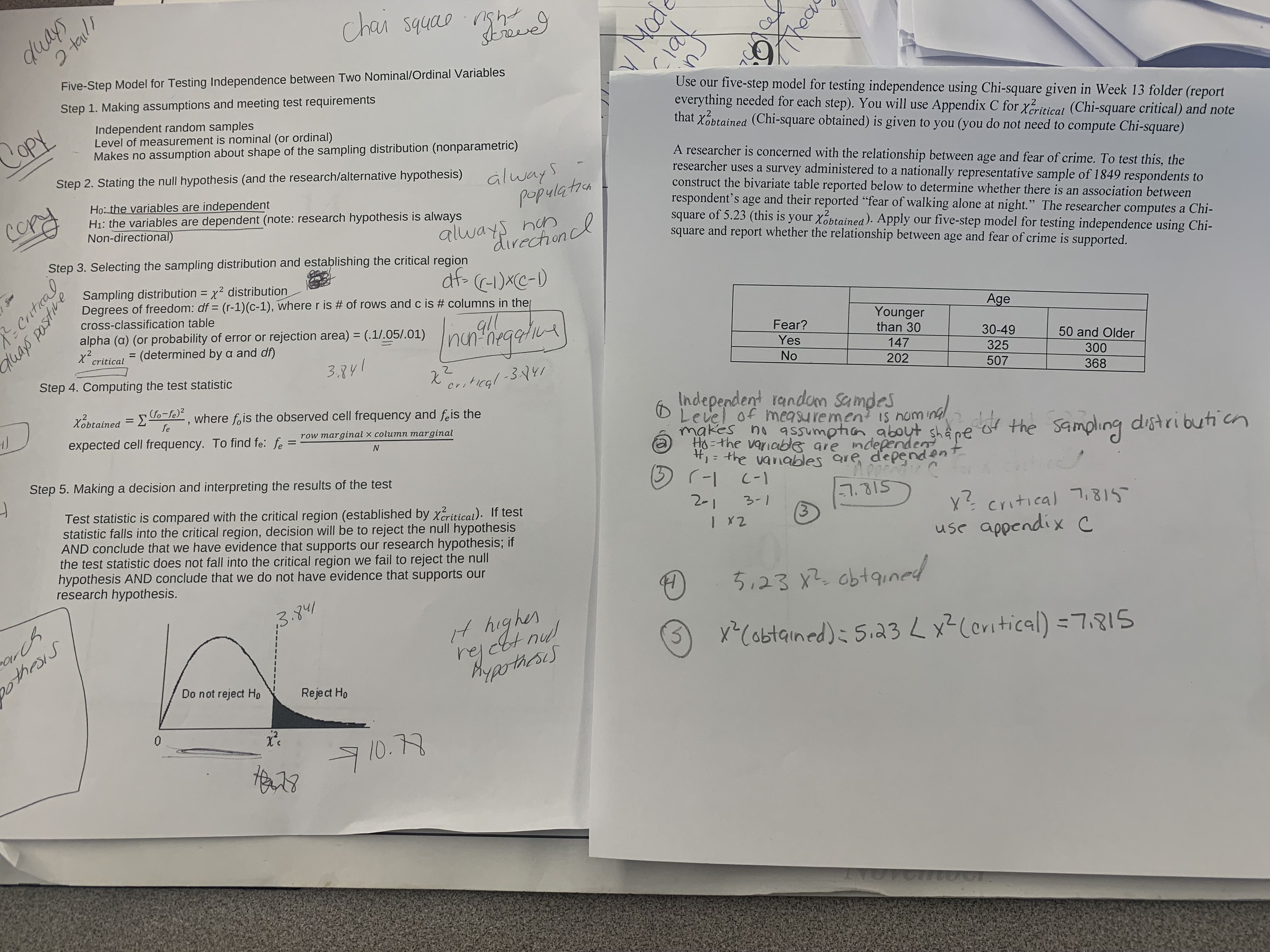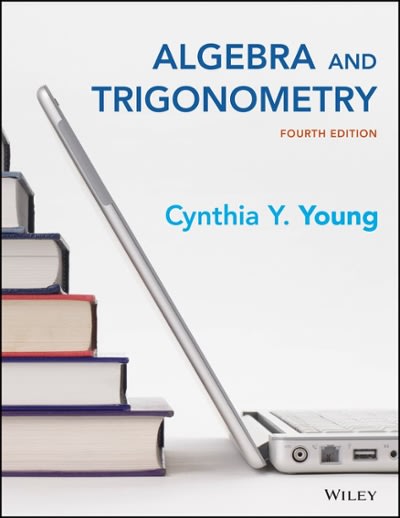can you check my work
Char squal right bay dways 2 tall v Mod Five-Step Model for Testing Independence between Two Nominal/Ordinal Variables Step 1. Making assumptions and meeting test requirements Use our five-step model for testing independence using Chi-square given in Week 13 folder (report Independent random samples everything needed for each step). You will use Appendix C for Xcritical (Chi-square critical) and note COPY Level of measurement is nominal (or ordinal) that Xobtained (Chi-square obtained) is given to you (you do not need to compute Chi-square) Makes no assumption about shape of the sampling distribution (nonparametric) A researcher is concerned with the relationship between age and fear of crime. To test this, the Step 2. Stating the null hypothesis (and the research/alternative hypothesis) always researcher uses a survey administered to a nationally representative sample of 1849 respondents to Ho: the variables are independent population construct the bivariate table reported below to determine whether there is an association between copy H1: the variables are dependent (note: research hypothesis is always respondent's age and their reported "fear of walking alone at night." The researcher computes a Chi- Non-directional) always non directional square of 5.23 (this is your Xobtained). Apply our five-step model for testing independence using Chi- square and report whether the relationship between age and fear of crime is supported. Step 3. Selecting the sampling distribution and establishing the critical region Sampling distribution = x2 distribution If = (- 1 ) x ( C - 1 ) 1 = Critical Degrees of freedom: df = (r-1)(c-1), where r is # of rows and c is # columns in the Age cross-classification table alpha (a) (or probability of error or rejection area) = (.11.05/.01) non-negative Younger Fear? than 30 30-49 X critical = (determined by a and df) Yes 147 50 and Older No 325 3.841 202 300 507 Step 4. Computing the test statistic * critical - 3.141 368 Xobtained = [ fo-fe)? le, where fois the observed cell frequency and feis the Independent random samples Level of measurement is nominal? expected cell frequency. To find fe: fo = row marginal x column marginal makes no assumption about sha Ho = the variables are independent shape of the sampling distribution #, = the variables are dependent Step 5. Making a decision and interpreting the results of the test 5- 1 C - 1 Test statistic is compared with the critical region (established by Xcritical). If test 2- 1 3 - 1 ( = 7. 815) * ? critical 7:815- statistic falls into the critical region, decision will be to reject the null hypothesis * 2 AND conclude that we have evidence that supports our research hypothesis; if use appendix c the test statistic does not fall into the critical region we fail to reject the null hypothesis AND conclude that we do not have evidence that supports our research hypothesis. 5,23 x2 - obtained It higher repeat nud x 2 (obtained ) = 5.23 2 x2 ( critical) = 7.815 pothesis hypothesis Do not reject Ho Reject Ho 7 10.78







